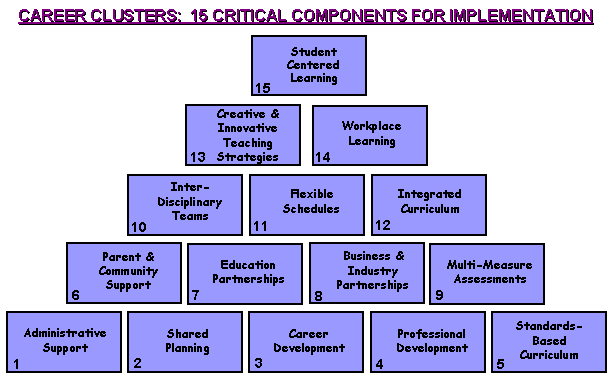|

|
|
|
|
The Global Food School (GFS)
is a career and technical education (CTE) curriculum integration (CI) and work-based learning (WBL) project focused on
modernizing the foundation of the youth workforce development system.
Collaboration and open-access are core
values. Why
all this for food? Universal relevance.
|
|
|
|
|
As the hub of life, food connects to
everything and everything connects through food. Math, science, history, social studies, language, geography, economics,
politics, and physical education -- all are embedded and easily identified, mapped, and enhanced in the practical occupational
curricula for the cultivation, marketing, distribution, preparation, presentation, and consumption of food. Through
food-centric classroom instruction and work-based learning experiences, theoretical merges with practical and what was abstract
is now concrete. It clicks! In addition to facilitating curriculum integration, food-focused programs of study (POS) connect
to a wide array of career clusters (e.g. Human Services, Health Science, Manufacturing, Transportation, Distribution &
Logistics), thus allowing young people unsure of their abilities/ interests to explore vertical, horizontal, and diagonal
pathways. When the time comes to commit -- no acquired knowledge or skills are wasted.
|
|
|
|
|
The Carl D. Perkins Career and Technical
Education Act of 2006; the National Research Center for Career and Technical Education (NRCCTE); the States’ Career
Clusters Initiative (SCCI); the National Association of State Directors of Career Technical Education Consortium (NASDCTEc);
California Department of Education (CDE); New York State Education Department (NYSED); Big Picture Learning; the National
Academy Foundation (NAF); New Visions For Public Schools (NVPS); the Pearson Foundation; George Lucas' Edutopia; the Gates
Foundation; WestEd; New York City’s Mayoral Task Force on CTE; the Center for an Urban Future; the U.S. Chamber of Commerce;
Columbia’s Institute on Education and the Economy (IEE) at Teachers College; and The National School-to-Work Opportunities
Act of 1994, et al.: all agree -- relevance is the key to unlocking adolescent curiosity and engaging
them in voluntary/active learning. Without it, many young people ask: "Why bother?"
Seeing no value in education, they fail to
acquire the knowledge and skills needed to succeed in a global economy or worse yet -- drop out -- give up.
In terms of required remediation
and unemployability, the numbers are staggering.
|
|
|
|
|
|
|
Unfortunately, SCCI's simple sequential implementation diagram  fails to convey the complexity of their widely-embraced, Perkins IV-funded education reform strategy. Of its fifteen
critical components, CI and WBL require the most coordination and cooperation between stakeholders. fails to convey the complexity of their widely-embraced, Perkins IV-funded education reform strategy. Of its fifteen
critical components, CI and WBL require the most coordination and cooperation between stakeholders. Technology can facilitate
the development/implementation process, but it can't turn mandated learning standards into relevant knowledge and skills without
multi-level human engagement. Nor can it replace patient adult exemplars willing to transfer those 21st century
capabilities through mutually beneficial partnerships (i.e. internships and apprenticeships). And finally, it can't
upgrade the image of CTE and WBL without the approbation of peers, teachers, parents, employers, and community leaders. Research
has been conducted; studies disseminated; models designed; software engineered; websites built; partnerships established;
communities formed; professional development provided, but progress is slow and time is running out for Generation Z. Critical
mass is required. |
|
|
|
|
Why global? Again –
universal relevance. From micro to macro,  the task is the same: youth workforce development is the worldwide challenge of the new millennium. the task is the same: youth workforce development is the worldwide challenge of the new millennium.
Without the knowledge and skills needed to function in the 21st century
-- billions of young people (under-25) face a bleak future plagued by mass unemployment, chronic instability, and persistent
conflict. Educating
half the world's population sounds impossible, but no more so than walking on the moon or operating rovers on Mars.
With a goal of this magnitude, the question is: Where
do we begin?
|
|
|
|
|
The answer is: New
York City. As the largest, most culturally and linguistically diverse city on the planet, NYC is a perfect
microcosm in which to launch this social engineering experiment. With over 160 languages spoken in the homes of
its students; 17 modern languages taught in its schools; and nine languages into which it translates all its published materials,
the New York City school system is a natural laboratory for developing and testing project-driven, integrated CTE curricula
in multiple languages for global distribution through the United Nations. Where better to tackle this
global problem than the capital of the world? In the coming months, with the help of students, teachers, administrators,
parents, and employers, we'll be bringing you new, research-based ways to teach, learn, experience, and appreciate the central aspect of
life that connects us all. Please visit periodically to explore, participate, provide feedback, and benefit from this cooperative endeavor. |
|
|
|
|
|
|
|
(Translation: "To Be Or Not To Be . . .") |
|
|
|
|
|